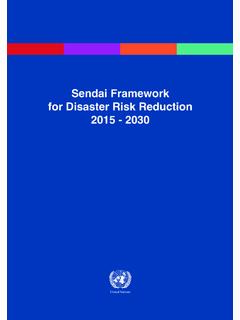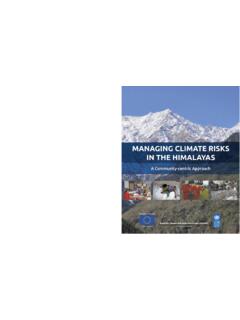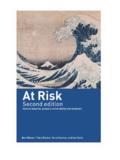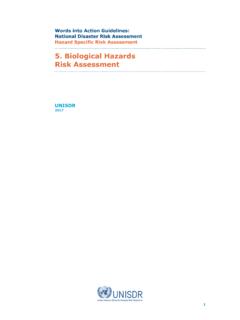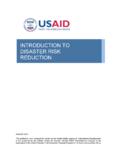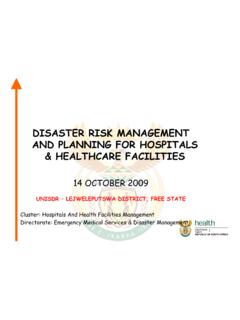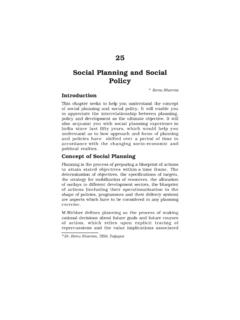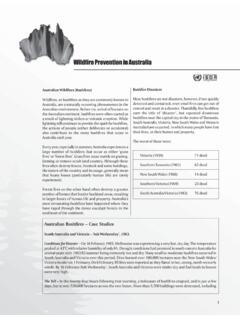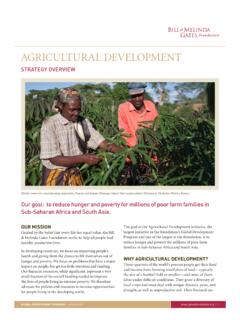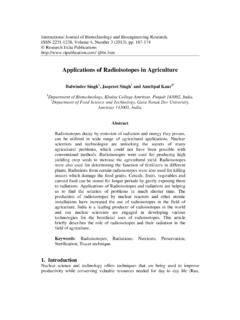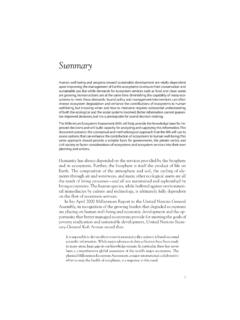Transcription of HAZARDS, DISASTERS AND YOUR COMMUNITY
1 Towards safer INDIA Government of India Ministry of Home Affairs National disaster Management Division hazards , DISASTERS AND your COMMUNITY A PRIMER FOR PARLIAMENTARIANS Version towards safer INDIA 2 Published by National disaster Management Division, Ministry of Home Affairs, Government of India hazards , DISASTERS AND your COMMUNITY VERSION A PRIMER FOR PARLIAMENTARIANS towards safer INDIA 3 This document is prepared by Prof Anand S Arya, Anup Karanth and Ankush Agarwal under the GoI-UNDP disaster Risk Management Programme towards safer INDIA 4 CHAPTER 1 hazards AND DISASTERS 5 CHAPTER 2 EARTHQUAKES hazards AND DISASTERS 9 CHAPTER 3 TSUNAMI hazards AND DISASTERS 14 CHAPTER 4 LANDSLIDE hazards AND DISASTERS 18 CHAPTER 5 CYCLONE hazards AND DISASTERS 24 CHAPTER 6 FLOOD hazards AND DISASTERS 31 CHAPTER 7 DROUGHT hazards AND DISASTERS 36 CHAPTER 8 FOREST FIRE hazards AND DISASTERS 39 CHAPTER 9 CHEMICAL AND INDUSTRIAL ACCIDENTS 44 CHAPTER 10 OTHER TYPES OF NATURAL hazards AND DISASTERS 46 CHAPTER 11 EFFECTS OF NATURAL HAZARD ON
2 ECONOMY & DEVELOPMENT 51 CHAPTER 12 ROLE OF POLICY MAKERS IN disaster RISK REDUCTION 55 ANNEX A disaster MANAGEMENT INSTITUTIONAL ARRANGEMENTS IN INDIA 57 ANNEX B LIST OF RESOURCE INSTITUTIONS 60 CONTENTS towards safer INDIA 5 WHAT IS A HAZARD? HOW IS IT CLASSIFIED? A dangerous condition or events that threaten or have the potential for causing injury to life or damage to property or the environment. They can be categorized in various ways but, based on the origin, hazards worldwide are basically grouped in two broad headings: 1. Natural hazards ( hazards with meteorological, geological or even biological origin) 2. Unnatural hazards ( hazards with human-caused or technological origin) It is also important to know that natural phenomena are extreme climatological, hydrological, or geological, processes that do not pose any threat to persons or property.
3 A massive earthquake in an unpopulated area, for example, is a natural phenomenon, not a hazard. It is when these natural phenomena interact with the man made environment or fragile areas which causes wide spread damage. WHAT ARE DISASTERS ? Almost everyday we witness in the newspaper or on the TV, there are reports of DISASTERS around the world. So what are DISASTERS ? How are they different from accidents? disaster is defined as: ",,,,,a serious disruption of the functioning of a society, causing widespread human, material, or environmental losses which exceed the ability of the affected society to cope using its own resources.
4 " A disaster is the product of a hazard such as earthquake, flood or windstorm coinciding with a vulnerable situation which might include communities, cities or villages. There are two main components in this definition: hazard and vulnerability. Without vulnerability or hazard there is no disaster . A disaster occurs when CHAPTER 1 hazards AND DISASTERS disaster Vulnerability Hazard Trigger event Earthquake Tsunamis Floods Cyclones Volcanic eruption Drought Landslide War Technological accident Environmental pollution .. Underlying Dynamic Unsafe Causes Pressure Conditions Limited access to resources Illness and disabilities Age/sex Poverty.
5 Lack of - institutions - education - training - skills Population expansion Urbanization Uncontrolled development Environmental degradation .. Dangerous location Dangerous buildings Low income level .. towards safer INDIA 6 hazards and vulnerability meet. See the figure along with underlying issues under each. There are several important characteristics that make DISASTERS different from Accidents. The loss of a sole income earner in a car crash may be a disaster to a family, but only an accident to the COMMUNITY . Variables such as Causes, Frequency, Duration of the Impact, Speed of Onset, Scope of the Impact, Destructive Potential, Human Vulnerability etc determine the difference.
6 WHAT IS VULNERABILITY? Vulnerability is defined as The extent to which a COMMUNITY , structure, service, or geographic area is likely to be damaged or disrupted by the impact of particular hazard, on account of their nature, construction and proximity to hazardous terrain or a disaster prone area." Now take for example a house built from cane and thatch and the other a brick building. The house built from cane and thatch that can be blown in a tropical cyclone are more vulnerable to the wind than a brick building. A badly constructed brick building is more likely to disintegrate with the violent ground shaking of an earthquake than cane or thatch hut and is more vulnerable to earthquake hazard.
7 Hence structures should be built strong enough to resist maximum force exerted by any event or for combination of event. Such measure will take care of the physical vulnerability. Social and economic conditions also determine the vulnerability of a society to an extent. It has been observed that human losses in DISASTERS in developing countries like India tend to be high when compared to developed countries where material losses predominate. See the figure where the settlements are located in hazardous slopes. Many landslide and flooding DISASTERS are linked to what you see in the figure below.
8 Unchecked growth of settlements in unsafe areas exposes the people to the hazard. In case of an earthquake or landslide the ground may fail and the houses on the top may topple or slide and affect the settlements at the lower level even if they are designed well for earthquake forces. WHAT IS RISK? Risk is a measure of the expected losses (deaths, injuries, property, economic activity etc) due to a hazard of a particular magnitude occurring in a given area over a specific time period. Site Site after pressures from population growth and urbanization river river Unstable slope towards safer INDIA 7 The figure on the right illustrates essentially the four factors essentially hazards , location, exposure, and vulnerability which contribute to risk.
9 They are: hazards (physical effects generated in the naturally occurring event), Location of the hazards relative to the COMMUNITY at risk, Exposure (the value and importance of the various types of structures and lifeline systems such as water-supply, communication network, transportation network etc in the COMMUNITY serving the population, and Vulnerability of the exposed structures and systems to the hazards expected to affect them during their useful life. Risk reduction can take place in two ways: 1. Preparedness This protective process embraces measures which enable governments, communities and individuals to respond rapidly to disaster situations to cope with them effectively.)
10 Preparedness includes the formulation of viable emergency plans, the development of warning systems, the maintenance of inventories and the training of personnel. It may also embrace search and rescue measures as well as evacuation plans for areas that may be at risk from a recurring disaster . Preparedness therefore encompasses those measures taken before a disaster event which are aimed at minimising loss of life, disruption of critical services, and damage when the disaster occurs. All preparedness planning needs to be supported by appropriate legislation with clear allocation of responsibilities and budgetary provisions. 2. Mitigation Mitigation embraces all measures taken to reduce both the effect of the hazard itself and the vulnerable conditions to it in order to reduce the scale of a future disaster .

